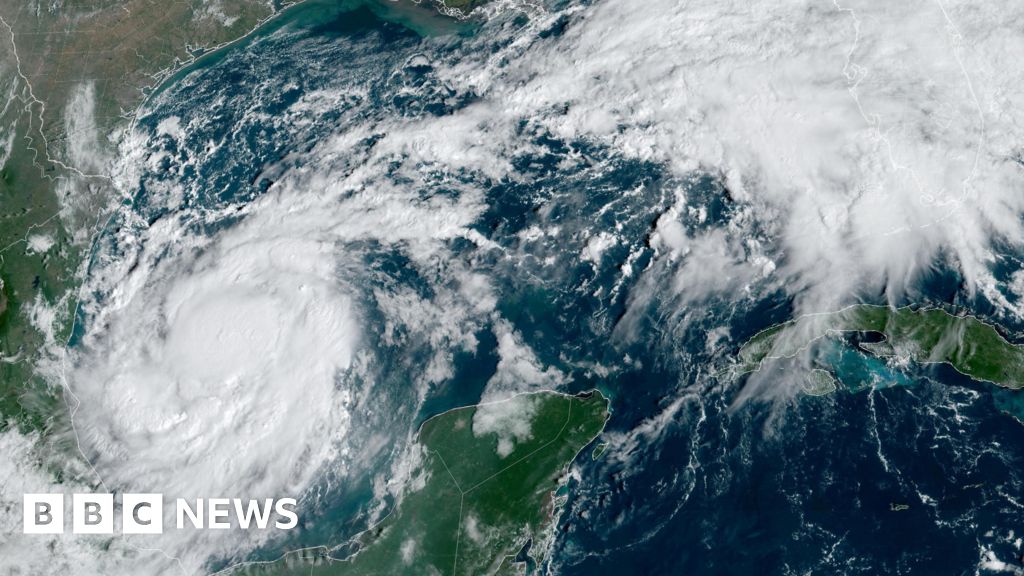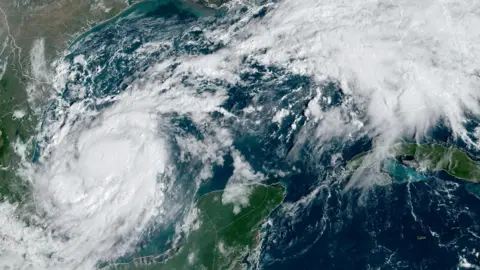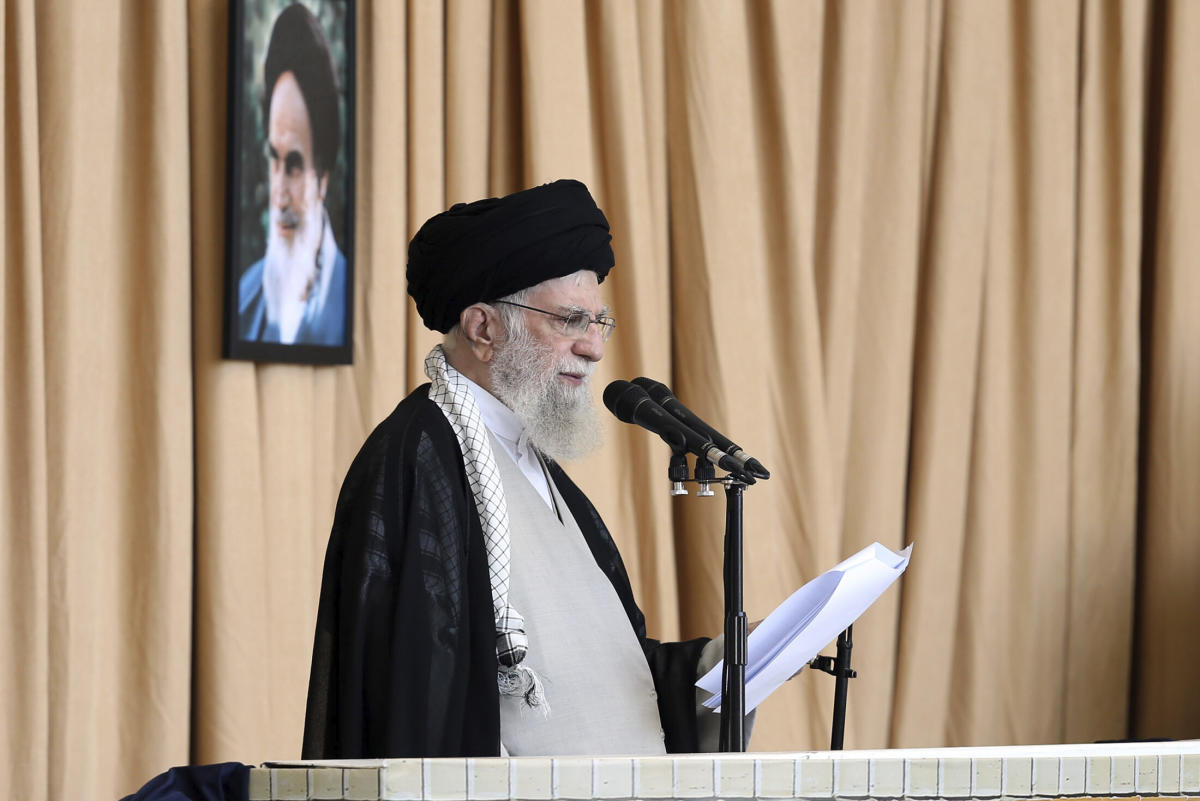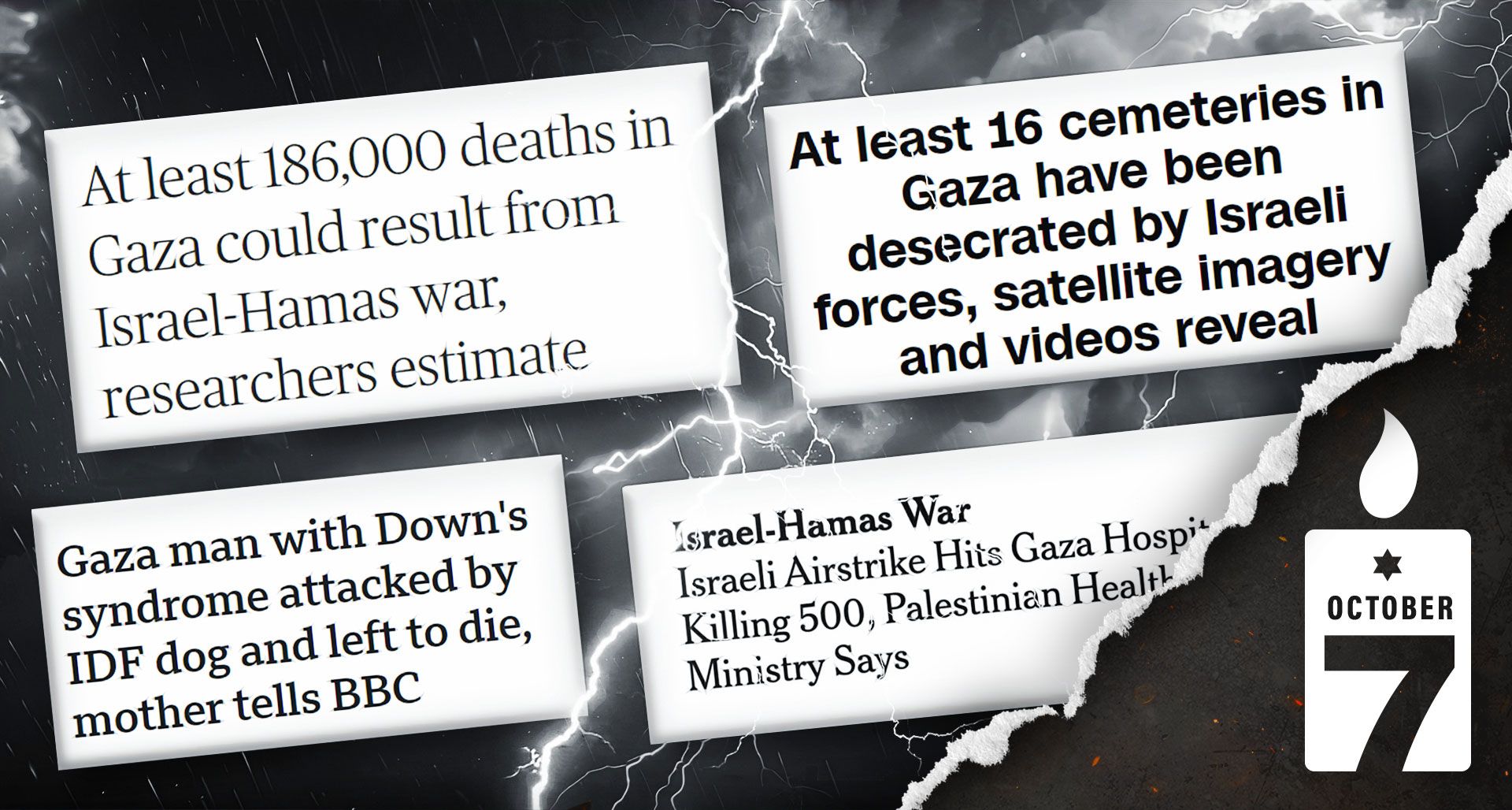News
Hurricane Milton expected to strengthen as it heads for Florida

 Reuters
ReutersA state of emergency has been declared in parts of Florida as a hurricane barrels towards the already-ravaged Gulf Coast.
The National Hurricane Centre confirmed that Milton – currently off the coast of Mexico – had intensified into a Category 1 hurricane on Sunday and could pose “life-threatening hazards” for parts of Florida’s west coast.
It comes just 10 days after Storm Helene – the deadliest mainland storm since Katrina in 2005 – tore through the south-east, killing at least 225 people, with hundreds still missing.
In Florida, where Helene left at least 14 dead, Governor Ron DeSantis issued the emergency warning for 35 counties and said preparations were under way to restore power and clear roads ahead of Milton’s arrival.
On Sunday, Milton had maximum sustained winds of 80mph (130km/h).
“There is increasing confidence that a powerful hurricane with life-threatening hazards will be affecting portions of the Florida west coast around the middle of this week,” the Hurricane Centre said.
Heavy rain was expected in the region from Sunday into Monday, with more rain and strong winds on Tuesday and Wednesday night.
Rainfall could be between 5-8in (127-203mm) across the Florida Peninsula and the Keys, with some areas receiving up to 12in (304mm), which could bring a risk of flash flooding and minor-to-moderate river flooding for parts of the west coast, the centre said.
 CHANDAN KHANNA/AFP
CHANDAN KHANNA/AFPThe new hurricane comes as the clean-up efforts from Helene could take years, according to the US government.
While a large proportion of the deaths occurred in North Carolina, others have been recorded in Florida, Georgia, South Carolina, Tennessee and Virginia.
Hundreds of roads remain closed, hampering efforts to send aid to hard-hit communities.
Helene, which made landfall as a category-four hurricane, damaged structures, caused flash flooding and knocked out power to millions of homes.
News
The most electrifying television of 2024

Television does love a bit of law and order, doesn’t it? Whether it’s Line of Duty or Slow Horses, we’re forever bombarded with small screen depictions of right being separated from wrong. Enough? Seemingly not, because here comes Showtrial to offer up more.
This is the second series of the BBC anthology, which follows a splashy court trial that prompts a media frenzy and hooks the nation. The first, broadcast in 2021, focused on a student who’d gone missing in Bristol, while this second – different story, different actors – lands in Brighton, a place where climate activists are thriving, closing roads, protecting trees, and giving the local constabulary a right old headache.
When leading activist Marcus Calderwood – bicycle, trouser clips, megaphone – is left for dead in a hit-and-run, he uses his last words to name a serving policeman as his killer. The policeman, Justin Mitchell (Michael Socha), claims his innocence with such sociopathic arrogance that only a fool would agree to represent him in court.

Enter Sam Malik (Adeel Akhtar), an earnest campaigning lawyer whose default setting is perpetual anxiety. Sam wears cheap suits, and is nursing a personal tragedy that has robbed him of sleep for months. He’s going to have his work cut out for him here; as Showtrial is so keen to suggest, the police these days do err towards the corrupt and the bent. “Not just one bad apple,” one of the climate protesters says, “the whole basket is rotten”, later hammering home the point by sneering: “Yeah, like anyone is going to believe the word of a cop these days.”
It quickly becomes clear, then, that it isn’t just Marcus on trial – it’s the entire force. No wonder his lawyer’s shoulders are stooped.
Written by Ben Richards (a novelist who adapted the Scandi noir The Bridge into English in 2013), Showtrial packs a lot into its five episodes. Richards cherry-picks whose backstory he fleshes out, which makes the drama a little uneven. Of one leading detective, for example, we learn only that he doesn’t drink but does like bonsai trees. Meanwhile, we’re given enough biography of the prosecuting lawyer, Leila Hassoun-Kenny (Nathalie Armin), to fill an entire series.
She’s half Arabic, and is constantly warring with her willowy sister, whose life coach – this is Brighton, remember, encourages her to avoid all contact with her because her sister is “red” while she is “yellow”, and these auras rarely mix well. They shout at one another until their mother collapses with a pulmonary embolism. Families, eh? In other episodes, we discover more about bicycle pedals than we would while watching the Tour de France.

And yet, like light coming through trees, tension is gradually built up as the trial proceeds, until it turns the knuckles white. Showtrial works best when it focuses on just Sam and Justin, the former desperate to do good and proper legal work for a client who flaunts a deeply problematic personality. Though Justin strenuously denies murder, he blames the climate protester for the death of a pregnant woman who crashed her car on a road she’d never have been driving on had the protesters not been demonstrating on her usual route. He’d held the woman in his arms as she died, and his PTSD can now only assert itself as a deadly rage.
We already know that Akhtar is one of our very best screen actors. As he showed in the first series of Sherwood and 2016’s Murdered by My Father, he’s someone who can express a panoply of human emotions with just his overcooked eyeballs and their attendant crows feet. But it is Socha (a stalwart of Shane Meadows films) who is the real revelation here – his performance vibrates with intensity. He’s amazing, terrifying, mesmeric. The last half-hour of the fourth episode – in which the two square off at one another, alternately digging through layers of self-protection and trading insults – is surely the most electrifying television of 2024.
It’s only when the credits roll that you realise you’d been holding your breath all along.
‘Showtrial’ continues next Sunday at 9pm on BBC One. All episodes are streaming on BBC iPlayer
News
BBC Strictly's Nikita Kuzmin left red-faced after song blunder during results show


Strictly Come Dancing professional Nikita Kuzmin was left red-faced on Sunday’s results show after he made a huge blunder while talking to host Claudia Winkleman
Travel
New ‘luggage rage’ causing problems for passengers on flights – and how to avoid it

A NEW term called “luggage rage” has been causing chaos for airline passengers – here’s how to avoid it
Airlines are beginning to increase prices for checked luggage and are cracking down on carry-ons, according to Elliot Report.
This has led to outrage from passengers, who have dubbed it “luggage rage”, as they struggle to downsize or are forced to pay extra for their baggage.
As a result, reports of passengers having luggage tantrums have begun to spread, with no real solution in sight.
One passenger was asked to pay a whopping £50 after crew members claimed her carry-on was too big for the flight.
Unable to pay, she angrily unpacked her bag and tossed her personal belongings.
New airline rules have led companies to focus their efforts on generating more revenue from cabin luggage.
This means passengers will face higher check-in fees for their bags and smaller spaces for their carry-ons.
Some travellers have had to rip wheels off their suitcases and cut handles or straps of their backpacks to avoid paying extra.
This infuriates passengers, who are forced to rearrange their luggage in front of fellow travellers, hence the term “luggage rage.”
Jay Ternavan, founder of Jayway Travel, said: “The aircraft cabin is a stressful and vulnerable place to be and pushes people to angry outbursts more often than is the case in other places.”
To avoid becoming the latest passenger to experience “luggage rage,” travellers should check the rules of the airline they’re flying with before packing.
Airlines in Southeast Asia and Australia are notoriously strict with luggage size, Elliot Report added.
One passenger was asked to pay an extra £40 by an Australian airline because their bag was over the limit by less than a pound.
Another tip for travellers is to avoid over-packing to prevent giving the airline a chance to impose a fee.
Instead, passengers should aim to fit all their luggage into a small, regulation-size carry-on while being careful not to overdo it.
Kimberly Davis, travel advisor, said: “Look, if you haven’t figured out by now that your oversized carry-on isn’t going to fit over your seat, I don’t know where you’ve been for the last decade.”
Finally, to avoid having a meltdown over luggage travellers should steer clear of airlines known for trying to squeeze the most out of their passengers.
Airlines that advertise themselves as “ultra-low fare” or “discount” carrier are likely to cause a large amount of “luggage rage” amongst its customers.
However, Thomas Plante, a Californian psychologists, claims the easiest way to avoid “luggage rage” is to change your mindset.
“Lower your expectations,” he added.
It comes after travellers with hand luggage breathed a sigh of relief after European airlines revealed that they hoped to unify bag dimensions.
And passengers have been left fuming after being forced to check in their hand luggage – only to find the overhead lockers empty anyway.
Hand luggage rules for UK airlines
We’ve rounded up how much hand luggage you can take on UK airlines when booking their most basic fare.
Ryanair
One personal bag measuring no more than 40cm x 20cm x 25cm
EasyJet
One personal bag measuring no larger than 45cm x 36cm x 20cm
Jet2
One personal item that fits underneath the seat in front and one cabin bag no larger than 56cm x 45cm x 25cm weighing up to 10kg
TUI
One personal item that its underneath the seat in front and one cabin bag no larger than 55cm x 40cm x 20cm weighing up to 10kg
British Airways
One personal bag no larger than 40cm x 30cm x 15cm and one cabin bag no larger than 56cm x 45cm 25cm weighing up to 23kg
Virgin Atlantic
One personal item that fits underneath the seat in front and one cabin bag no larger than 56cm x 36cm x 23cm weighing up to 10kg
News
Iran is increasingly desperate, retired US general says

Iran is driven by desperation in its current conduct, the former commander of American forces in the Middle East said in an interview Sunday.
Speaking on CBS’ “Face the Nation,” former CENTCOM commander Frank McKenzie, now retired, said: “Iran is the country that’s in a corner. Their strike against Israel several nights ago was not particularly successful. Their principal ally in the region, Hezbollah has been decapitated, and its own offensive capability is gravely limited. Hezbollah’s is gravely limited. So Iran’s on their back heel.”
Last week, Iran launched a missile strike against Israel, a country that it considers a rogue nation, but its missiles did only limited damage. Iran was responding to recent attacks on its Hezbollah proxies in Lebanon; those attacks killed Hezbollah leader Hassan Nasrallah and caused other casualties, both among Hezbollah and civilians. Fighting continues in southern Lebanon between Israel and Hezbollah, even as fighting continues in Gaza between Israel and Hamas, another Iranian proxy.
Ayatollah Ali Khamenei, in a rare appearance Friday at public prayers, praised those who died fighting Israel. “Our resisting people in Lebanon and Palestine, you brave fighters, you loyal and patient people, these martyrdoms and the blood that was shed shouldn’t shake your determination but make you more persistent,” Iran’s supreme leader said.
Israel, which said that most of Iran’s missiles were intercepted, has threatened to retaliate for its strike.
“Israel has a lot of choices here,” McKenzie told host Margaret Brennan. “They can choose for something that would be very escalatory in terms of a strike against the Supreme Leader himself, perhaps, or against the nuclear program, or against the oil infrastructure, or they could look at military intelligence targets. They have a wide variety of options that they can choose from. They have the capability to execute most of those attacks.”
Though he said Israel has a right to strike back, President Joe Biden said Wednesday he wouldn’t be in favor of Israel targeting Iran’s nuclear facilities.
McKenzie, in response, said he thought it unwise to “take a potential target off the menu” and thereby make it easier for the other country to plan its defense.
“Having said that,” McKenzie said, “the Iranian nuclear target is a very difficult target. We have special capabilities that allow us to get at it. The Israelis do not have all of those capabilities. They can certainly hurt this target if they choose to, if they choose to strike it. But again, because of its size, complexity and scope and how it’s expanded over the last 10 years, it’s a very difficult target to take out.”
Brennan wondered about the “risk of unintended consequences,” the possibility of triggering Iran to consider actually building a nuclear bomb.
“Margaret, it’s always been my belief that the Iranians flirt with breakout,” McKenzie said, “with getting fissile material to create a bomb in order to extract concessions from us.”
He added: “They also know if they cross that line, you can’t go back. That’s a Rubicon that can’t be recrossed.”
McKenzie, a retired Marine Corps general, was CENTCOM commander from 2019 to 2022. The command include responsibilities for the Middle East and parts of Asia, including a number of countries that were part of the former Soviet Union.
Speaking to Brennan, he also said he found it entirely believable that Iran’s leaders, driven by “desperation” as they seek to stay in power, could be targeting former President Donald Trump as he seeks to regain the presidency.
“They view the election of President Trump as a direct threat to that regime preservation,” he said.
News
Arizona Private Schools Surge Tuition Despite State Vouchers
1.7K
In September 2023, private K-12 schools in Arizona decided to raise their tuition between 6 and 20 percent in response to experimental vouchers given to families to make private education more accessible, according to an article by Neal Morton for the Hechinger Report. In July 2023, Arizona became the first state to allow universal school choice and provide public funding for families to aid in private school tuition and fees.
This rise in tuition costs across the state happened only months after the state approval and will once again exclude the same families the decision intended to serve. As part of the initiative, the state provided families with about $7,000 of public funding to reduce the costs of non-public education. However, those opposed to Arizona’s empowerment scholarship accounts, or ESAs, maintain that this plan won’t benefit low-income families.
Nik Nartowicz, a state policy counselor for the legal advocacy group Americans United for Separation of Church and State, says the average cost of tuition will exceed the amount of money provided by the vouchers, not including “transportation and uniform costs.” While some of the private schools raised their prices to keep in line with inflation, others increased their tuition by more than 20 percent. In 2022, Arizona made all children K-12 eligible for an ESA. The rise in tuition came as a surprise to parents with children already enrolled in private schools.
Pam Lang sends her son with autism to a private school for students with disabilities. Lang confirmed that the tuition for her son’s school increased by $4,000 and said that the parents weren’t notified of the increase until the bill for the next school year arrived.
“Parents are faced with the possibility of having to drop other things they use ESAs for, like tutors—an expense that also increased for my son,” Lang told the Hechinger Report.
The rise in tuition has prevented low-income families from enrolling in private schools and has also affected families who could previously afford private education. Still, some conservatives maintain that vouchers and private school options help students and families out of “failing” public schools.
In July 2023, the New York Times reported that the vouchers for education in Arizona increased the accessibility of private education to more students. However, the Hechinger Report shows that, since the launch of the program in September 2023, private schools have increased their tuition, making them even less accessible than they were previously. The New York Times story noted repeatedly that the idea for the vouchers came from Tom Horne, a conservative superintendent of Arizona Public Instruction, and talked specifically about the progress other Republican-dominated states are making in providing similar resources.
Corporate media coverage has noted Arizona’s efforts and how the voucher plan might drain public school resources but hasn’t explored the implications of Arizona’s existing state codes, which have no requirements for “the accreditation, approval, licensing or registration of private schools in Arizona,” among other concerns. Arizona’s initiative doesn’t outline regulations to keep private schools from increasing their costs, which could continue throughout the year and could keep students stagnant in under-resourced schools, even with additional state funding.
Source: Neal Morton, “Arizona Gave Families Public Money for Private Schools. Then Private Schools Raised Tuition,” Hechinger Report, November 27, 2023.
Student Researchers: Sydney Getty, Jordan Guillette, Joanne Pratt, Alexsia Rose, and Emmeline Weeks (University of Massachusetts Amherst)
Faculty Evaluator: Allison Butler and Jeewon Chon (University of Massachusetts Amherst)
News
Did Media Coverage of the Israel-Hamas War Influence the Rise in Post-October 7 Antisemitism?

Since Hamas’ brutal invasion of Israel on October 7, 2023, antisemitic incidents in the United States and around the world have risen exponentially.
These incidents include acts of violence, harassment, vandalism, and glorification of anti-Israel terrorism.
As this rise in antisemitism can be tied to the October 7 attack and its aftermath, the question needs to be asked: Have the media played a role in this surge of antisemitism?
Throughout the war, both mainstream media organizations and alternative news sources on social media have parroted Hamas propaganda, spread unsubstantiated claims about Israel’s conduct, and concocted narratives that besmirch Israel’s reputation in the international arena.
While there is no definitive way of determining the extent to which the media’s portrayal of Israel has affected this rise in antisemitism, there is an interesting correlation between certain months where antisemitic incidents peaked and the media trends that existed during that month.
The following is a look at those months where antisemitic incidents rose (in comparison to the previous month) and the media stories that may have influenced this dangerous rise in anti-Jewish bigotry.
October 2023
Between September 2023 and October 2023, antisemitic incidents rose by 253%.
Here are some major stories and trends that appeared in the media’s coverage during October that may have contributed to this rise:
- Even in the immediate aftermath of the October 7 attack, some news organizations were already creating an anti-Israel narrative by parroting Hamas’ justification for its attack, creating an equivalence between Israeli and Hamas casualties, or turning their focus to Israel’s response and away from the atrocities themselves.
- After an explosion occurred at Al-Ahli Hospital, the media rushed to publish the Hamas Ministry of Health’s claim that an Israeli airstrike on the hospital had killed 500 people who were sheltering on the grounds. It was only later that these same outlets were forced to backtrack, recognizing that it was not an Israeli attack that had caused the explosion and that the number of casualties was much lower than initially reported.
- In preparation for its ground operation into Gaza, the IDF issued an order for Palestinians living in northern Gaza to move south for their own safety. However, several news outlets misrepresented this order and Israel’s actions to protect innocent Palestinians. Both Reuters and The Telegraph misrepresented the order as saying that the IDF would treat anyone remaining in northern Gaza as a terrorist while the British Medical Journal published a piece which termed this order as being akin to “expulsion.”
- At the same time as Palestinians were evacuating to southern Gaza, several mainstream media organizations uncritically shared the Hamas-run Ministry of Health’s claim that 70 Palestinians were killed by an Israeli strike while fleeing to the south. Despite the lack of hard evidence for this claim (and the IDF’s denial that it was operating in the area at the time), it was shared widely as fact by such outlets as MSNBC, Sky News, and the Washington Post.
- Near the end of October, a variety of esteemed media organizations published similarly worded pieces wherein they justified their reliance on casualty statistics released by the Gaza Health Ministry, thus legitimizing the use of Hamas propaganda.
⚠️ SOME VIEWERS MAY FIND THIS CONTENT DISTRESSING.
Early this morning, Hamas launched a surprise attack on Israel.
Men, women, and children have been murdered and abducted. 22 communities are overrun with terrorists. 40,000 reservists are called up for duty.
Here’s everything… pic.twitter.com/xBlCoY9IK8
— HonestReporting (@HonestReporting) October 7, 2023
December 2023
After a slight drop in November (possibly due to the ceasefire and hostage-prisoner swap held between Israel and Hamas at the end of the month), antisemitic incidents rose once again in December 2023.
Here are some major stories and trends that appeared in the media coverage that may have contributed to this rise that month:
- At the beginning of December, several news organizations presented a skewed portrait of the end of the ceasefire, either downplaying the fact that Hamas broke the ceasefire with a barrage of rockets or only focusing on Israel’s resumption of military activities and Hamas’ aggression.
- As Israeli forces moved further into Gaza, images began to emerge of male detainees stripped to their underwear and blindfolded. While this is proper procedure when dealing with suspected terrorists who may or may not be armed/wearing a suicide vest, various conspiracy theories began to emerge online about these images portraying Palestinians taken hostage by Israel or even being lined up for mass execution. At the same time, several media organizations downplayed the IDF’s legitimate reason for using these tactics while detaining suspects, portraying these images as a humiliation tactic or an example of Israeli barbarity.
- In their initial reports on a congressional hearing about campus antisemitism, several news outlets glossed over the fact that three university presidents would not condemn calls for Jewish genocide, effectively downplaying the concerning rise of antisemitism on university campuses and gaslighting the Jewish community.
- As December is the holiday season, various news organizations published stories on how the war was harming the observance of Christmas in the Holy Land, with subdued celebrations and a reduced presence of tourists. In effect, these news organizations were blaming Israel for ruining Christmas.
- In a report on corpses from Gaza being briefly brought into Israel for identification (to determine if they belonged to Israeli hostages), the Washington Post uncritically parroted a Hamas blood libel that the bodies had been returned without organs.
- A disturbing trend that emerged in December was the reliance of several news outlets on the Euro-Med Human Rights Monitor NGO, despite the fact that the organization has ties to Hamas and is known to fabricate stories meant to besmirch Israel’s reputation.
January 2024
January 2024 continued to see a high number of antisemitic incidents, with 65% of these related to Israel.
Here are some major stories and trends that appeared in the media coverage that may have contributed:
- As the South African genocide case against Israel was presented to the International Court of Justice in mid-January, there was a special focus on these baseless allegations throughout the month in the media and on social media. Some, such as New York Times opinion writer Megan Stack, used their media platforms to bolster the libel that Israel’s defensive war was an act of genocide.
- Near the end of the month, some media outlets publicized Hamas’ justification of the October 7 atrocities while others parroted Hamas’ ceasefire offer, falsely presenting the terror group as an antiwar movement.
- The British channel ITV published a three-minute video that purported to show a Palestinian man with a white flag being shot by an Israeli soldier. However, the video was edited and HonestReporting raised several questions about its reliability. Despite the sketchy nature of this video, it went viral on social media and fomented a significant amount of outrage against Israel.
- A CNN story about the IDF allegedly desecrating Gazan cemeteries went viral even though the IDF later revealed that Israeli forces were forced to operate in the cemetery due to Hamas tunneling under it and using it for combat purposes.
March 2024
March 2024 saw a rise in antisemitic incidents from February, with 78.5% of these incidents being related to Israel.
Here are some major stories and trends in the media that may have affected this uptick in antisemitic incidents:
- Several major news organizations, like The New York Times, CNN, and NPR, spread the false claims that Israel was severely restricting the entry of aid into the Gaza Strip and that no aid had reached the enclave’s northern half.
- The claim that due to the war, there was starvation in Gaza. In order to illustrate this humanitarian concern, The New York Times profiled the death of someone with a pre-existing medical condition while CNN published the medically questionable claim that a one-day-old baby had died of starvation.
- Major news organizations such as LA Times, The New York Times, and AFP cited Euro-Med Human Rights Monitor as a legitimate source despite its affiliation with Hamas and its history of spreading false and libelous information about the Jewish state.
- Al Jazeera’s false story that Israeli troops were raping Palestinian women in al-Shifa hospital. By the time it was deleted the next day, the story had already gone viral on social media.
Al Jazeera’s IDF rape allegations in Gaza highlight a key question: Are fabricated stories against Israel exceptions or part of propaganda strategies by Al Jazeera and Hamas?
(Some language has been edited to avoid censorship on other social media platforms). pic.twitter.com/kPi0oMXvmU
— HonestReporting (@HonestReporting) March 30, 2024
April 2024
For a second month in a row, antisemitic incidents continued to rise, with almost 76% of these incidents being related to Israel.
- In the aftermath of the accidental killing of seven World Central Kitchen aid workers by an Israeli drone, several news organizations held up the incident as uniquely severe, instead of another tragic case of “friendly fire” in the annals of Western military history. This helped develop a false narrative whereby Israel has gone “rogue” and is exceptionally aggressive.
- One of the biggest Israel-related stories of April was the Iranian rocket and drone attack against Israel. However, rather than castigate the Islamic Republic for its assault on the Jewish state, various media organizations either rationalized the Iranian attack or minimized its ferocity, ultimately creating a narrative that implicitly legitimizes politically based attacks on Jews and Israelis.
- Another major story in April was the anti-Israel encampments that spread throughout university campuses. The media chose to portray these encampments and their accompanying protests as “antiwar” and “pro-Palestinian,” downplaying the antisemitic rhetoric and celebration of anti-Israel violence that became commonplace. In effect, the media provided a shield of gaslighting and obfuscation for those advocating for Israel’s destruction and against Jewish students.
- As part of the reporting on these encampments and protests, some media aimed to legitimize them by spreading Hamas casualty numbers as the basis for their existence.
- Near the end of April, Hamas’ false allegations about the discovery of mass graves outside of Gazan hospitals with evidence of execution-style killings by Israeli forces went viral online and were also spread by several mainstream media organizations which appeared to take Hamas (and the UN officials who parroted their claims) at their word.
Let’s not sugarcoat it: the protests on university campuses are not about peace but about spreading anti-Israel and anti-Jewish sentiments. The media has often obscured these truths, gaslighting Jewish students and downplaying the violence they face. pic.twitter.com/PH0BXr9KKe
— HonestReporting (@HonestReporting) April 25, 2024
July 2024
After two months of decreasing antisemitic incidents, the number of incidents rose in July, with 61% of incidents being related to Israel.
- The media cited several biased “UN experts” who claimed that famine was spreading in Gaza, even though the allegation was unsubstantiated.
- One of the biggest sources of misinformation in July was a “correspondence” piece in the Lancet medical journal that baselessly claimed that the Gaza death toll was as high as 186,000. Even though there was zero evidence to back up this allegation, it was still spread by various media organizations, including Al Jazeera, The Washington Post, MSNBC, The Independent, and The Irish Times.
- Following an Israeli airstrike against the Houthis in retaliation for an attack on Tel Aviv that killed one Israeli and injured 10 others, several media reports either falsely portrayed this airstrike as indiscriminately targeting civilian areas or disregarded any mention of the Houthi attack that precipitated the Israeli response.
- A BBC story about an IDF dog attacking a Palestinian man with Down Syndrome and allegedly leaving him for dead left out several salient facts, including that members of his family were affiliated with Hamas, that the attack occurred during a battle between Israeli soldiers and terrorists, and that even though Israeli forces had left the area soon after the attack, the family did not return to look for the man until a week later. The BBC’s narrative left the false impression that Israeli forces cruelly use dogs to attack innocent and vulnerable Palestinians.
- After a Hezbollah rocket killed 12 Druze children playing soccer in Majdal Shams, news reports downplayed the fact that the victims were children, drew false comparisons between this strike and Israeli airstrikes in Gaza, and even tried to provide a post-facto justification for it.
- In response to the Hezbollah rocket attack in Majdal Shams, Israel killed Fouad Shukr, a senior Hezbollah military commander, in a targeted strike. Several news organizations ignored who the target was, making it seem as if Israel was indiscriminately bombing a Beirut suburb.
Seen the wild claim “186,000 Palestinians killed in Gaza”?
Here’s the scoop: they multiplied current, inaccurate death tolls by 4 to get this number. Even worse, the media ran with it, spreading false info far and wide. pic.twitter.com/dPfRM9mVlN
— HonestReporting (@HonestReporting) July 9, 2024
August 2024
Once again, antisemitic incidents rose for the second month in a row, with 57% of incidents being related to Israel.
- Following the assassination of Hamas leader Ismail Haniyeh in Tehran, several mainstream media organizations (such as Reuters, Wall Street Journal, The Guardian, and The New York Times) sought to portray the terror head as a moderate voice and pragmatist and accused Israel of causing a dangerous escalation in the region. The connection between antisemitic incidents and false narratives about Israel was made clear when the NYPD was forced to boost patrols in Jewish neighborhoods in the wake of the assassinations of Haniyeh and Fouad Shukr.
- In mid-August, Israel struck a Hamas command center that was located in an UNRWA school-turned-shelter, killing 19 terrorists. However, several news organizations relied on Hamas sources to portray this as an attack on civilians or as part of a continued campaign by Israel against Gazan schools, with some even completely ignoring the fact that Hamas terrorists were killed in the strike.
- Later in the month, Israel pre-emptively struck Hezbollah rocket launchers as the Lebanon-based terror organization was planning a major assault on the Jewish state. The New York Times, LA Times and NPR portrayed Israel as the aggressor and the initiator of hostilities while Sky News accused Israel of risking a regional war by defending its people and territory.
- Another theme that permeated media coverage in August was the claim that a polio epidemic was threatening Gaza’s children, based on one confirmed case in the enclave. This was another instance where the media parroted projections of a humanitarian disaster (that had not yet occurred) in order to besmirch Israel’s defensive campaign in Gaza.
An IDF’s strike killed 19 terrorists. But instead of reporting the facts, major outlets like CNN and Reuters echoed Hamas’ false claims.
The truth? The strike targeted a command center hidden in a mosque, not civilians. pic.twitter.com/GnlEEkHQu2
— HonestReporting (@HonestReporting) August 11, 2024
***
As we can see from the above, there is a strong correlation between the months that antisemitism spiked and negative coverage of Israel in the media and online during those same months.
While the extent of the media’s influence on antisemitic trends cannot be definitively determined, this apparent correlation is a reminder to all media organizations, journalists, and social media users that the narratives they put forward about the Israel-Hamas war do not stay on the page or online — they have real-world consequences.
Liked this article? Follow HonestReporting on Twitter, Facebook, Instagram and TikTok to see even more posts and videos debunking news bias and smears, as well as other content explaining what’s really going on in Israel and the region.
-

 Womens Workouts2 weeks ago
Womens Workouts2 weeks ago3 Day Full Body Women’s Dumbbell Only Workout
-

 Science & Environment3 weeks ago
Science & Environment3 weeks agoHow to unsnarl a tangle of threads, according to physics
-

 Science & Environment2 weeks ago
Science & Environment2 weeks agoHyperelastic gel is one of the stretchiest materials known to science
-

 Technology3 weeks ago
Technology3 weeks agoWould-be reality TV contestants ‘not looking real’
-

 Science & Environment2 weeks ago
Science & Environment2 weeks ago‘Running of the bulls’ festival crowds move like charged particles
-

 Science & Environment3 weeks ago
Science & Environment3 weeks agoMaxwell’s demon charges quantum batteries inside of a quantum computer
-

 News2 weeks ago
News2 weeks agoOur millionaire neighbour blocks us from using public footpath & screams at us in street.. it’s like living in a WARZONE – WordupNews
-

 Science & Environment3 weeks ago
Science & Environment3 weeks agoHow to wrap your mind around the real multiverse
-

 Science & Environment3 weeks ago
Science & Environment3 weeks agoSunlight-trapping device can generate temperatures over 1000°C
-

 Science & Environment3 weeks ago
Science & Environment3 weeks agoLiquid crystals could improve quantum communication devices
-

 Science & Environment2 weeks ago
Science & Environment2 weeks agoQuantum ‘supersolid’ matter stirred using magnets
-

 Science & Environment3 weeks ago
Science & Environment3 weeks agoITER: Is the world’s biggest fusion experiment dead after new delay to 2035?
-
News3 weeks ago
the pick of new debut fiction
-

 Science & Environment3 weeks ago
Science & Environment3 weeks agoPhysicists are grappling with their own reproducibility crisis
-

 Science & Environment3 weeks ago
Science & Environment3 weeks agoQuantum forces used to automatically assemble tiny device
-

 Science & Environment3 weeks ago
Science & Environment3 weeks agoWhy this is a golden age for life to thrive across the universe
-

 News3 weeks ago
News3 weeks agoYou’re a Hypocrite, And So Am I
-

 Sport2 weeks ago
Sport2 weeks agoJoshua vs Dubois: Chris Eubank Jr says ‘AJ’ could beat Tyson Fury and any other heavyweight in the world
-

 Science & Environment3 weeks ago
Science & Environment3 weeks agoCaroline Ellison aims to duck prison sentence for role in FTX collapse
-

 Science & Environment3 weeks ago
Science & Environment3 weeks agoTime travel sci-fi novel is a rip-roaringly good thought experiment
-

 Science & Environment3 weeks ago
Science & Environment3 weeks agoLaser helps turn an electron into a coil of mass and charge
-

 Science & Environment3 weeks ago
Science & Environment3 weeks agoNuclear fusion experiment overcomes two key operating hurdles
-

 Technology1 week ago
Technology1 week ago‘From a toaster to a server’: UK startup promises 5x ‘speed up without changing a line of code’ as it plans to take on Nvidia, AMD in the generative AI battlefield
-

 Football1 week ago
Football1 week agoFootball Focus: Martin Keown on Liverpool’s Alisson Becker
-
Business1 week ago
Eurosceptic Andrej Babiš eyes return to power in Czech Republic
-

 Science & Environment2 weeks ago
Science & Environment2 weeks agoRethinking space and time could let us do away with dark matter
-

 Science & Environment3 weeks ago
Science & Environment3 weeks agoNerve fibres in the brain could generate quantum entanglement
-

 MMA1 week ago
MMA1 week agoConor McGregor challenges ‘woeful’ Belal Muhammad, tells Ilia Topuria it’s ‘on sight’
-

 News3 weeks ago
News3 weeks ago▶️ Hamas in the West Bank: Rising Support and Deadly Attacks You Might Not Know About
-

 Science & Environment2 weeks ago
Science & Environment2 weeks agoFuture of fusion: How the UK’s JET reactor paved the way for ITER
-
Business1 week ago
Should London’s tax exiles head for Spain, Italy . . . or Wales?
-

 News2 weeks ago
News2 weeks agoIsrael strikes Lebanese targets as Hizbollah chief warns of ‘red lines’ crossed
-

 Science & Environment3 weeks ago
Science & Environment3 weeks agoA new kind of experiment at the Large Hadron Collider could unravel quantum reality
-

 News3 weeks ago
News3 weeks ago▶️ Media Bias: How They Spin Attack on Hezbollah and Ignore the Reality
-

 News3 weeks ago
News3 weeks agoNew investigation ordered into ‘doorstep murder’ of Alistair Wilson
-

 Science & Environment2 weeks ago
Science & Environment2 weeks agoUK spurns European invitation to join ITER nuclear fusion project
-

 CryptoCurrency2 weeks ago
CryptoCurrency2 weeks agoCardano founder to meet Argentina president Javier Milei
-

 Science & Environment2 weeks ago
Science & Environment2 weeks agoMeet the world's first female male model | 7.30
-

 Science & Environment2 weeks ago
Science & Environment2 weeks agoX-rays reveal half-billion-year-old insect ancestor
-

 Science & Environment3 weeks ago
Science & Environment3 weeks agoA slight curve helps rocks make the biggest splash
-
Business3 weeks ago
JPMorgan in talks to take over Apple credit card from Goldman Sachs
-

 CryptoCurrency2 weeks ago
CryptoCurrency2 weeks agoBitcoin bulls target $64K BTC price hurdle as US stocks eye new record
-

 Womens Workouts2 weeks ago
Womens Workouts2 weeks agoBest Exercises if You Want to Build a Great Physique
-

 News2 weeks ago
News2 weeks agoWhy Is Everyone Excited About These Smart Insoles?
-

 News2 weeks ago
News2 weeks agoFour dead & 18 injured in horror mass shooting with victims ‘caught in crossfire’ as cops hunt multiple gunmen
-

 Technology2 weeks ago
Technology2 weeks agoRobo-tuna reveals how foldable fins help the speedy fish manoeuvre
-

 Technology2 weeks ago
Technology2 weeks agoGet ready for Meta Connect
-

 CryptoCurrency2 weeks ago
CryptoCurrency2 weeks agoEthereum is a 'contrarian bet' into 2025, says Bitwise exec
-

 Health & fitness3 weeks ago
Health & fitness3 weeks agoThe secret to a six pack – and how to keep your washboard abs in 2022
-

 Science & Environment3 weeks ago
Science & Environment3 weeks agoQuantum time travel: The experiment to ‘send a particle into the past’
-

 Science & Environment2 weeks ago
Science & Environment2 weeks agoWhy we need to invoke philosophy to judge bizarre concepts in science
-

 CryptoCurrency2 weeks ago
CryptoCurrency2 weeks agoBitcoin miners steamrolled after electricity thefts, exchange ‘closure’ scam: Asia Express
-

 CryptoCurrency2 weeks ago
CryptoCurrency2 weeks agoDorsey’s ‘marketplace of algorithms’ could fix social media… so why hasn’t it?
-

 CryptoCurrency2 weeks ago
CryptoCurrency2 weeks agoDZ Bank partners with Boerse Stuttgart for crypto trading
-

 CryptoCurrency2 weeks ago
CryptoCurrency2 weeks agoLow users, sex predators kill Korean metaverses, 3AC sues Terra: Asia Express
-
Politics2 weeks ago
UK consumer confidence falls sharply amid fears of ‘painful’ budget | Economics
-

 Womens Workouts2 weeks ago
Womens Workouts2 weeks agoEverything a Beginner Needs to Know About Squatting
-

 Womens Workouts2 weeks ago
Womens Workouts2 weeks ago3 Day Full Body Toning Workout for Women
-

 Travel2 weeks ago
Travel2 weeks agoDelta signs codeshare agreement with SAS
-

 Servers computers2 weeks ago
Servers computers2 weeks agoWhat are the benefits of Blade servers compared to rack servers?
-

 Politics2 weeks ago
Politics2 weeks agoHope, finally? Keir Starmer’s first conference in power – podcast | News
-

 Technology1 week ago
Technology1 week agoThe best robot vacuum cleaners of 2024
-

 Health & fitness1 week ago
Health & fitness1 week agoThe 7 lifestyle habits you can stop now for a slimmer face by next week
-

 Sport2 weeks ago
Sport2 weeks agoUFC Edmonton fight card revealed, including Brandon Moreno vs. Amir Albazi headliner
-

 Technology2 weeks ago
Technology2 weeks agoiPhone 15 Pro Max Camera Review: Depth and Reach
-

 News2 weeks ago
News2 weeks agoBrian Tyree Henry on voicing young Megatron, his love for villain roles
-

 Health & fitness3 weeks ago
Health & fitness3 weeks agoThe maps that could hold the secret to curing cancer
-

 Science & Environment3 weeks ago
Science & Environment3 weeks agoBeing in two places at once could make a quantum battery charge faster
-

 CryptoCurrency2 weeks ago
CryptoCurrency2 weeks agoRedStone integrates first oracle price feeds on TON blockchain
-

 CryptoCurrency2 weeks ago
CryptoCurrency2 weeks agoBlockdaemon mulls 2026 IPO: Report
-

 CryptoCurrency2 weeks ago
CryptoCurrency2 weeks agoCoinbase’s cbBTC surges to third-largest wrapped BTC token in just one week
-

 MMA2 weeks ago
MMA2 weeks agoRankings Show: Is Umar Nurmagomedov a lock to become UFC champion?
-

 Science & Environment2 weeks ago
Science & Environment2 weeks agoCNN TÜRK – 🔴 Canlı Yayın ᴴᴰ – Canlı TV izle
-

 News1 week ago
News1 week agoUS Newspapers Diluting Democratic Discourse with Political Bias
-

 Technology1 week ago
Technology1 week agoQuantum computers may work better when they ignore causality
-

 Science & Environment2 weeks ago
Science & Environment2 weeks agoHow one theory ties together everything we know about the universe
-

 CryptoCurrency2 weeks ago
CryptoCurrency2 weeks agoCrypto scammers orchestrate massive hack on X but barely made $8K
-

 Science & Environment2 weeks ago
Science & Environment2 weeks agoTiny magnet could help measure gravity on the quantum scale
-

 Science & Environment2 weeks ago
Science & Environment2 weeks agoA tale of two mysteries: ghostly neutrinos and the proton decay puzzle
-

 Science & Environment2 weeks ago
Science & Environment2 weeks agoHow do you recycle a nuclear fusion reactor? We’re about to find out
-

 CryptoCurrency2 weeks ago
CryptoCurrency2 weeks agoDecentraland X account hacked, phishing scam targets MANA airdrop
-

 CryptoCurrency2 weeks ago
CryptoCurrency2 weeks agoTelegram bot Banana Gun’s users drained of over $1.9M
-

 CryptoCurrency2 weeks ago
CryptoCurrency2 weeks agoVonMises bought 60 CryptoPunks in a month before the price spiked: NFT Collector
-

 CryptoCurrency2 weeks ago
CryptoCurrency2 weeks agoSEC asks court for four months to produce documents for Coinbase
-

 CryptoCurrency2 weeks ago
CryptoCurrency2 weeks ago‘Silly’ to shade Ethereum, the ‘Microsoft of blockchains’ — Bitwise exec
-

 CryptoCurrency2 weeks ago
CryptoCurrency2 weeks agoVitalik tells Ethereum L2s ‘Stage 1 or GTFO’ — Who makes the cut?
-

 CryptoCurrency2 weeks ago
CryptoCurrency2 weeks ago‘No matter how bad it gets, there’s a lot going on with NFTs’: 24 Hours of Art, NFT Creator
-
Business2 weeks ago
Thames Water seeks extension on debt terms to avoid renationalisation
-
Business2 weeks ago
How Labour donor’s largesse tarnished government’s squeaky clean image
-
Politics2 weeks ago
‘Appalling’ rows over Sue Gray must stop, senior ministers say | Sue Gray
-

 News2 weeks ago
News2 weeks agoBrian Tyree Henry on voicing young Megatron, his love for villain roles
-
News2 weeks ago
The Project Censored Newsletter – May 2024
-

 Womens Workouts2 weeks ago
Womens Workouts2 weeks agoHow Heat Affects Your Body During Exercise
-

 Womens Workouts2 weeks ago
Womens Workouts2 weeks agoKeep Your Goals on Track This Season
-

 Womens Workouts2 weeks ago
Womens Workouts2 weeks agoWhich Squat Load Position is Right For You?
-

 TV2 weeks ago
TV2 weeks agoCNN TÜRK – 🔴 Canlı Yayın ᴴᴰ – Canlı TV izle
-

 MMA1 week ago
MMA1 week agoRoberto Satoshi compares losses to Francis Ngannou’s boxing run as he finally defends RIZIN title
-

 News2 weeks ago
News2 weeks agoChurch same-sex split affecting bishop appointments
-

 Politics3 weeks ago
Politics3 weeks agoTrump says he will meet with Indian Prime Minister Narendra Modi next week
-

 Technology2 weeks ago
Technology2 weeks agoFivetran targets data security by adding Hybrid Deployment



You must be logged in to post a comment Login